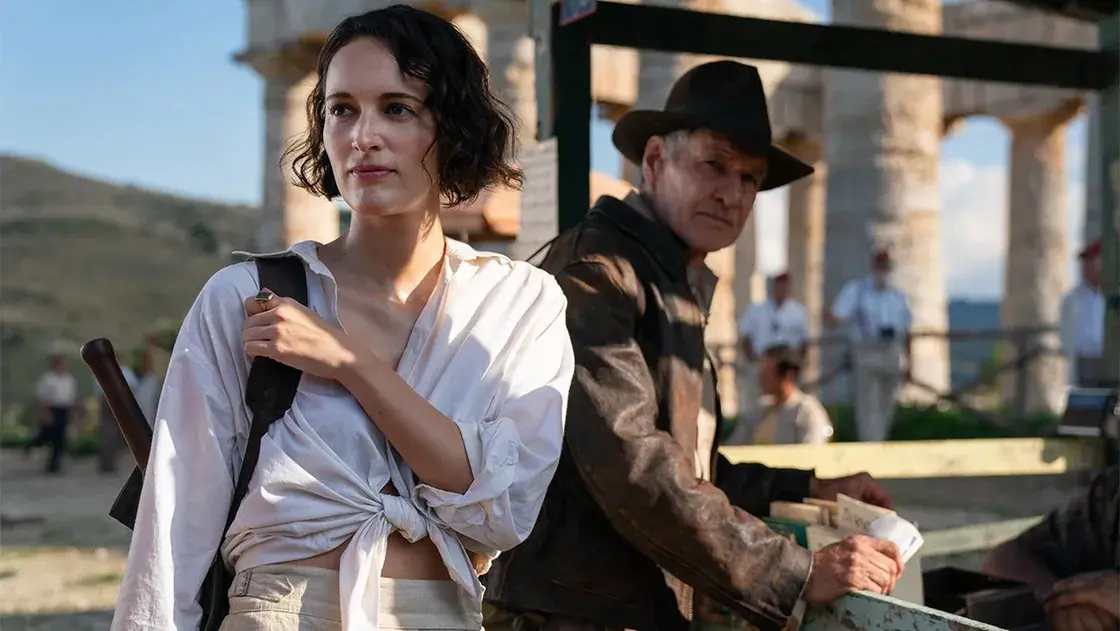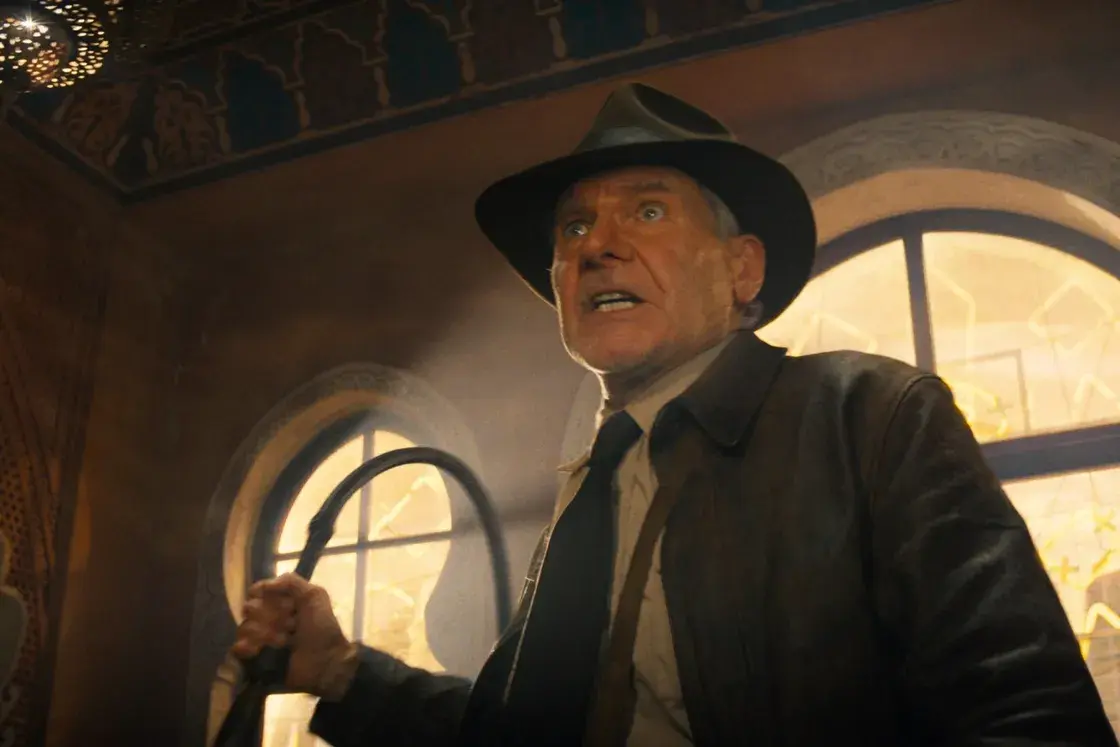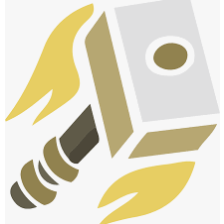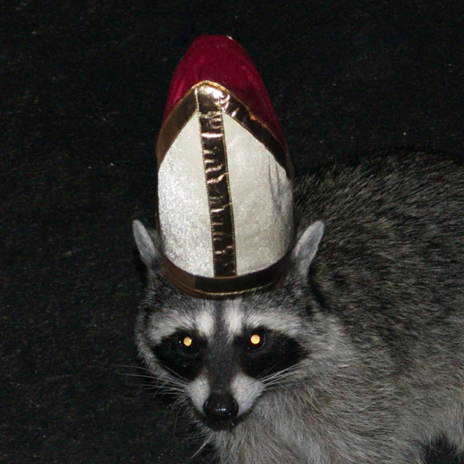The new Indiana Jones movie hits different in the IP age.
In 1981’s Indiana Jones and the Raiders of the Lost Ark, the mercenary archaeologist René Belloq looks his friend-turned-foe Indiana Jones square in the eye and tells him the absolute truth. “Indiana,” he says, “we are simply passing through history.” They’re discussing the treasure they seek: the Ark of the Covenant, which might be just a valuable old artifact or might be the home of the Hebrew God, who knows. “This — this is history.”
Humans die. Civilizations pass away. Artifacts, however, remain. They tell us who we were, and who we still are.
History — the pursuit of it, the commodification of it, our universal fate to live inside of it — is Indiana Jones’s obsession, and that theme bleeds right off the screen and onto us. After all, Raiders was released 42 years ago, before I was born, and the fifth and final film (or so we’re told anyhow), Indiana Jones and the Dial of Destiny, just premiered at the Cannes Film Festival, due to arrive in theaters this summer. Watch it at this moment in time, and you’re reminded that you, too, are passing through history. Those movie stars are looking a lot older.
 Phoebe Waller-Bridge and Harrison Ford in Indiana Jones and the Dial of Destiny.
Disney
Phoebe Waller-Bridge and Harrison Ford in Indiana Jones and the Dial of Destiny.
Disney
This is a series preoccupied with time and its cousin, mortality, from the characters’ relentless pursuit of the ancient world’s secrets to the poignancy of Jones’s relationships. His adventures are frequently preceded by the revelation that someone or something in his life has died — a friend, a family member, a relationship. Indiana Jones and the Last Crusade, released in 1989, makes the fact of death especially moving, with its plot point turning on immortality and the Holy Grail. More humorously, cobweb-draped skeletons are strewn liberally throughout the series, reminding us that other explorers and other civilizations have attempted what Indiana is trying to do. He’s just another in a string of adventurers, one who happens to be really good at throwing a punch.
Dial of Destiny feels like an emphatic period at the end of a very long sentence, a sequel making its own case against some future further resurrection — not unlike last year’s Cannes blockbuster premiere, Top Gun: Maverick, or 2021’s fourth installment of The Matrix. That’s not just because Harrison Ford is turning 81 this summer. It’s in the text; Dial of Destiny argues, explicitly, that you have to leave the past in the past, that the only way to ensure the world continues is to put one foot down and then another, moving into the future.
Ironic, yes, for a movie built on giant piles of nostalgia and made by a company that proudly spends most of its money nibbling its own tail. In fact, the entire Indiana Jones concept was nostalgia-driven even before the fedora made its big-screen debut. Harrison Ford’s whip-cracking adventurer descends from swashbuckling heroes of pulp stories and matinee serials that George Lucas and Steven Spielberg loved as kids; like that other franchise Ford launched, the Indy series is both original and pastiche, both contemporary-feeling and set in another time, another place, a world that’s far, far away.
Dial of Destiny is loaded with related ironies, though they’re mostly extratextual. On the screen, it’s fairly straightforward: a sentimental vehicle, one that hits familiar beats and tells familiar jokes, comfort food to make you feel like a kid again for a little while. The Indiana Jones movies, even the bad ones, have always been pretty fun to watch in a cartoon-movie kind of way, while also being aggressively just fine as films — I mean that with fond enthusiasm — and Dial of Destiny fits the bill perfectly.
This installment turns on pieces of a dial created by the Greek mathematician Archimedes, which, like most of the relics that pop up in Indy’s universe, may or may not bestow godlike powers on its wielder. Naturally, the Nazis want it, especially Hitler. So the film opens in 1939, with Indy (a de-aged Ford, though unfortunately nobody thought to sufficiently de-age his voice) fighting Jürgen Voller (Mads Mikkelsen) to nab it while getting out of one of his signature high-octane scrapes via a familiar combo of costume changes, well-aimed punches, acrobatics, and dumb luck. Then we jump forward to 1969, to discover a very much not de-aged Indy collapsed into his armchair in front of the TV, shirtless and in boxers, snoozing and clutching the dregs of a beer. This is a movie about getting old, after all.
 Harrison Ford looks fierce, wielding a bullwhip in one hand, fedora on his head.
Indy still has his fedora and his whip, of course.
Harrison Ford looks fierce, wielding a bullwhip in one hand, fedora on his head.
Indy still has his fedora and his whip, of course.
You can deduce the rest — old friends and new, tricks and turns, mysteries, maybe some time travel, the question of whether the magic is real. Phoebe Waller-Bridge is in this movie as Helena Shaw, Jones’s archaeologist goddaughter, and injects it with some much-needed joie de vivre. There are some fun chase scenes, though director James Mangold’s visual sense (richly demonstrated in previous films like Logan and Ford v Ferrari) falls a little flat next to the memory of Steven Spielberg’s direction. But for the most part, it’s all here again. I don’t want to spoil your fun.
Yet a thread that’s run through the whole four-decade series, with heightened irony every time it comes up, is the battle between Indy — who firmly believes that history’s relics ought to be in a museum for everyone to enjoy — and fortune-seeking mercenaries or power-seeking Nazis, who want to privately acquire those artifacts for their own reasons. (Leaving the artifact where it is, perhaps even among its people, still doesn’t really seem to be an option.) It’s a mirror for the very real theft of artifacts throughout history by invading or colonizing forces, the taking of someone else’s culture for your own use or to assert your own dominance. That battle crops up again in this installment, with both mercenaries and Nazis on offer. Shaw, voicing a darker archaeological aim, wryly insists that thieving is just capitalism, and that cash is the only thing worth believing in; Voller’s aims are much darker.
It’s all very fitting in a movie about an archaeologist set in the midcentury. But you have to notice the weird Hollywood resonance. When Raiders first hit the big screen, it was always intended to be the first in a series, much like Lucas and Spielberg’s beloved childhood serials. (The pair in fact made their initial Indiana Jones deal with Paramount for five movies.) But while some bits (and chunks) of the 1980s films have aged pretty badly, they endure in part because they’re remixes that are alive with imagination and even whimsy, the product so clearly of some guys who wanted to play around with the kinds of stories they loved as children.
Now, in the IP era, remixing is a fraught endeavor. The gatekeepers, owners and fans alike, are often very cranky. The producers bank on more of the same, not the risk of a new idea. The artifacts belong to them, and they call the shots, and tell you when you can have access or not. (The evening Indiana Jones and the Dial of Destiny opened at Cannes, Disney — already infamously known for locking its animation away in a vault and burying the work of companies it acquires — announced it would start removing dozens of its own series from its streamers.) Rather than move into the future and support some new sandboxes, the Hollywood of today mostly maniacally rehashes what it’s already done. It envisions a future where what’s on offer is mostly what we’ve already had before.
In this I hear echoes of thinkers like Theodor Adorno and Max Horkheimer — two men who fled the Nazis, incidentally — who proposed the culture industry was giving people the illusion of choice, but only the freedom to choose what they said was on offer. You can have infinite variations on the same thing.
It’s a sentiment strangely echoed in Dial of Destiny. One night, Shaw is doing a card trick for some sailors, who are astounded that when they call out the seven of clubs, that’s what they pull out of the deck. But she shows Indy how she does it — by forcing the card on them, without them realizing. “I offer the feeling of choice, but I ultimately make you pick the one I want,” she explains, with a wry grin.
After 40 years and change, Indiana Jones and the Dial of Destiny releases into a world where there’s more stuff than ever to watch, but somehow it feels like we have less choice, less chance of discovery. It is our moment in history — an artifact of what it was to be alive right now. When the historians of the future look back, I have to wonder what they’ll see, and thus who, in the end, they’ll think we really were.
Indiana Jones and the Dial of Destiny premiered at the Cannes Film Festival and is playing in theaters worldwide.
The problem is you can’t “take risks” with Indiana Jones stories, because those “risks” would rely on the the source material of 30’s adventure serials that he’s based on… which used abhorrently racially/culturally insensitive stereotypes for its “dark continent” villains that “Western/White Adventure Man” would combat.
Because of modern sensibilities (and rightly so), Indiana Jones can only ever fight Nazis or somehow go to space and turn into Buck Rogers - i.e. Star Wars.
I just got out of it, no spoilers. It felt more like a cynical cash grab, cutting bits and pieces from the original films and remixing them.
“Oh, this is just like that bit from Raiders where Marian gets kidnapped… Oh, hey, that’s like when the tank ground up against the wall…”
There’s entirely too much of “Well if you liked that, you’ll probably like this…” moments.
To the point where the only key scene they didn’t reference was the whole “Where doesn’t it hurt?” bit… but wait for it… it’s there.
There ARE bits I liked. When he asks Helena “How can you go after the thing that drove your dad crazy?” and she replies “Wouldn’t you?” With the full knowledge of Last Crusade and the Holy Grail. Good moment.
The emotional retconning of Crystal Skull was powerful (no spoilers), they set it up one way and at the end you see it was backwards the whole time.
At one point, an airplane engine fails with a suspiciously familiar noise:
https://youtu.be/X-rkFaIPyL4#t=7s
Boyd Holbrook is remarkably punchable here, as he was in Logan with the worlds most dangerous
octogenarian“Nonogenarian!”My assumption was this would be a cash grab. I’ll still watch it but likely won’t see it in theaters
It’s funny that Indy is accused of taking artifacts from their people, since Raiders is the only movie in which he does that, though he does it twice. But he returns the stones in Temple of Doom, and he lets the grail stay behind, and he lets the crystal skull stay behind (though he didn’t have much choice).
Great review!
My family chose this movie as their 4th of July weekend movie to watch in theaters. Wish me luck. I’ll let you know my thoughts when we get back.
So, it wasn’t a bad movie. The first 20 minutes were great. But there was a lot of unnecessary padding, especially during later chase sequences, and the way they treated old Indy felt unnecessarily mean. 5/10. They should’ve ended with Last Crusade.
Beautiful review! 🥰
So, should I watch it or skip?






